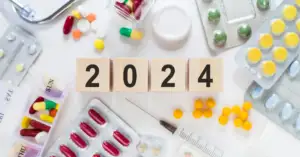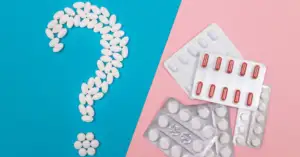When it comes to drugs, one of the most common questions patients ask is, Are generic drugs as effective as branded ones?
Despite decades of clinical evidence and strict global regulations, myths about generic drugs continue to circulate, often creating unnecessary hesitation and confusion.
In reality, generic drugs play a vital role in making healthcare accessible and affordable across the world. They are scientifically equivalent to their branded counterparts and must meet the same regulatory standards before reaching patients. Yet, a few persistent misconceptions still cloud public perception.
Let’s break down some of the most common myths and uncover the facts behind them.
Myth 1: Generic drugs are less effective than branded ones.
Fact: Generic drugs contain the same active ingredients as branded drugs and must demonstrate bioequivalence, meaning they work the same way and provide the same therapeutic effect. Regulatory agencies closely evaluate each generic for quality, purity, and potency before approval. The difference lies only in the name and packaging—not in performance.
Myth 2: Lower cost means lower quality.
Fact: The lower price of generic drugs doesn’t come from lower quality but from reduced costs in research, development, and marketing. When a brand-name drug’s patent expires, other manufacturers can produce the same medicine without repeating the costly R&D process. This makes generics more affordable while maintaining the same safety and efficacy profile.
Myth 3: Generic drugs take longer to work.
Fact: Approved generics deliver the same amount of active ingredient in the same time frame as their branded versions. They share identical dosage forms, strengths, and routes of administration. The therapeutic response remains consistent. The only visible differences may be in the tablet’s color, shape, or packaging design.
Myth 4: Brand-name drugs are always safer.
Fact: Both branded and generic drugs undergo rigorous regulatory testing and continuous monitoring for adverse effects. Each must meet the same safety and quality standards before entering the market. Post-marketing surveillance systems ensure that any safety issues are promptly addressed, regardless of whether the drug is branded or generic.
Myth 5: Generics are made in unregulated facilities.
Fact: Generic medicines are manufactured in Good Manufacturing Practice (GMP) compliant facilities that follow the same stringent inspection standards as branded manufacturers.
Conclusion
Generic drugs have transformed global healthcare by making treatments more accessible without compromising quality. They enable health systems and patients alike to manage costs more efficiently while maintaining trust in therapy outcomes.
At Spring Bio Solution, we recognize the critical role generics play in expanding access to essential medicines. Through our reliable comparator sourcing and clinical trial supply management services, we support pharmaceutical partners in accessing the right reference and comparator drugs efficiently and compliantly—helping them advance safe, effective, and affordable healthcare worldwide.
FAQs
Are generic drugs as effective as branded drugs?
Yes. Generic drugs contain the same active ingredients and must demonstrate bioequivalence to branded versions, meaning they work the same way in the body and provide the same therapeutic benefits. Regulatory authorities ensure generics meet strict quality, purity, and potency standards before approval.
Why are generic drugs cheaper than branded ones?
Generic drugs are more affordable because manufacturers don’t have to repeat the original research and development, clinical trials, and marketing expenses. Once a brand-name drug’s patent expires, generics can be produced at lower costs, without compromising quality, safety, or effectiveness.
Do generic drugs have different side effects than branded drugs?
No. Since the active ingredient is the same, generics have the same therapeutic effects and potential side effects as their branded counterparts. Differences may exist only in inactive ingredients such as coloring or binding agents, which rarely affect safety or efficacy.
How do regulators ensure the quality of generic drugs?
Generic medicines are manufactured in Good Manufacturing Practice (GMP)-compliant facilities that undergo regular inspections and audits by global regulatory agencies. These checks ensure every batch meets the same stringent quality, safety, and efficacy standards as branded drugs.





